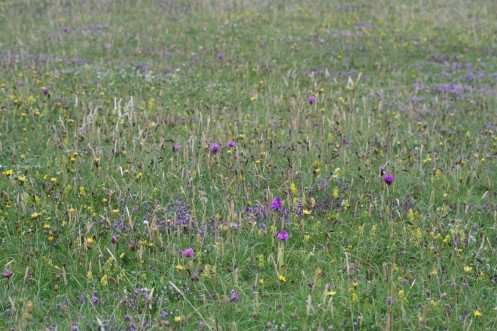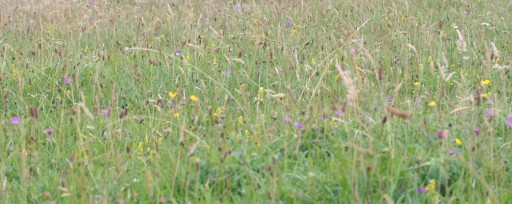|
Sandro's Irish Wildflower Conservation Grade Seed Mixture: Range: Designer Wild Flower Mixtures (Code DW)
Product Name: Short Cut Floral Lawn Product Code: DW01 If purchasing this seed mix, print or save this page and keep it as your reference as the species and advice change occasionally
Description: Site preparation: Site preparation should aim for a totally weed free start, if the soil contains weeds a 'hort' or paper layer covered with 5cm of enriched coarse sand will do to smother normal weeds. Sand can also be incorporated into some areas of the soil to increase drainage, in other areas, dampness can be encouraged for other species. Lime may be added, please check with DBN. The gardeners aim is to create well drained conditions as per a normal lawn. and it must be weed free. You can sow other low maintenance species such as Dwarf Bulbs and low growing perennials which are are ideal for introducing into the short cut lawn, as well as our plants from our wider range. Once sown, after the first years annual flowers, keep the meadow cut every 4 to 6 to 8 weeks depending on how fertile your soil.
Maintenance: In the first year, do not cut until August or September or later to allow the annuals to finish flowering, then 'strim' away the taller annual growth. In year two, cut to maintain as a lawn. By year 3 use a mower, (not mulch mower) to keep the meadow short, the aim is to allow three main flowering periods from May to early June, from late June and July and again in Autumn. Between each flowering phase the lawn needs to be cut. Floral
lawns will then on require cutting every 4 to 6 weeks when growth reaches
10cm or just before a flush of flower is finished. You should remove the
cuttings. If
using Mulching Mowers rake the soil very well at the end of the season to
remove all the dead debris.
Weeding:
Vigorous grasses should be spot weeded. White clover (if supplied in
the mixture) while welcome in very large lawn areas if regularly mown,
should really be controlled in small areas.
Mixture
Specifications:
This photograph is one day in the life of an ever changing meadow. Species
List: Marjoram, Red Bartsia, Mallow, Forget-me-not, Broadleaf Plantain,, Kidney Vetch, Lady's Bedstraw, Ox-eye Daisy, Red Clover, Ribwort Plantain, Rough Hawksbit, St Johnswort, Wild Carrot, Sorrel, Yarrow, Quaking Grass, Lady's Smock, White Bedstraw, Selfheal, Smooth Hawksbit, Corn Marigold, Corn Poppy, Cornflower, Corncockle, Scentless Mayweed, and more depending on species available
Seed
Sowing Rates:
Grass seed or nurse crop requirement: Nurse Crop: A nurse crop is not required |
|
Product Warning: DBN recommends that this mixture is not for human or animal consumption. Product Warning
Your purchase: Contributes to DBN's work of creating crops of Conservation Grade - Native Origin Wild flora. You
help us to inform and pay land-owners to manage native species and to
assist DBN in handing on our heritage for another generation. You should also consider yourself another Irish wildflower grower.
Email: info@wildflowers.ie Last
updated on 18/09/2024
Internal DBN Research: Please BEE Aware, people have become stung by falling or running into short bee meadows. Signs and fences during flowering may be essential.
External research paper abstract link https://www.sciencedirect.com/science/article/pii/S0006320717306201
Lawn mowing frequency affects bee abundance and diversity in suburban yards
|

